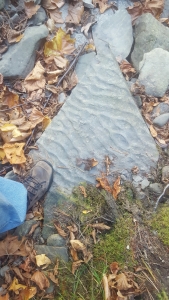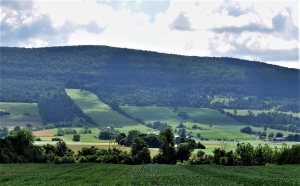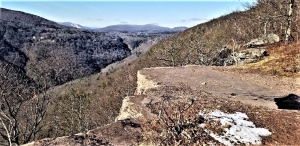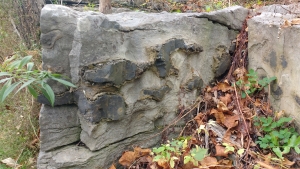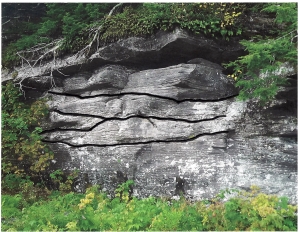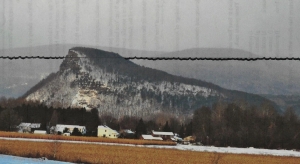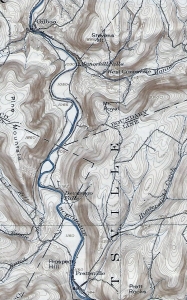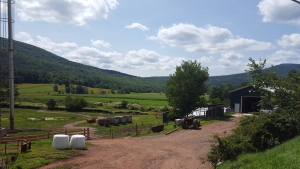A landslide across the river July 13, 2023
Landslide hazards?
The Catskill Geologists Robert and Johanna Titus The Mountain Eagle; Dec. 8, 2017
Did you hear the news of the recent landslide, across the Hudson in the town of Greenport? It occurred at the Sons and Daughters of Italy Club on Bridge Street, right along the banks of the Claverack Creek. Several hundred yards of earth slid into the creek. This was something called a rotational slump. A large mass of earth becomes unstable. Then a sizable curved fracture opens up and the whole overlying mass slides downhill. The slide follows the fracture in a rotational fashion, hence the name. When all is done, a nearly vertical cliff is left behind at the “head” of the slide. See our photo. The bottom, or “toe” of the slide, is a chaotic mass of earth that might very well dam any stream that lies below it. That happened at Greenport and a lot of engineering had to be done on the fly in order to keep Claverack Creek from flooding its own valley.
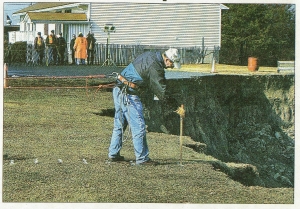
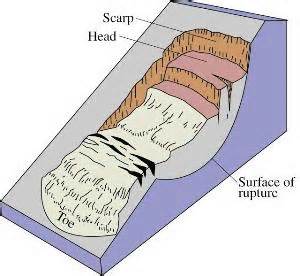
What surprised us was that the same stretch of the Creek had seen a very similar slide only 11 years ago. We covered the story for another newspaper that we wrote for back then. The surprise wasn’t so much where and when the slide happened but in other things.
Back in 2006, just before the first slide, there had been a long period of heavy rainfall.
We had been watching this, and we saw problems developing. We reasoned that the heavy rainfall would soak into the ground and destabilize all the lake deposits along river banks such as on the Claverack. You see, that river flows across the deposits of a large glacial lake. At the close of the Ice Age, the lower Hudson Valley had been flooded by the waters of something called Glacial Lake Albany. The lake basin accumulated thick sequences of silt and clay. If you visit the Greenport vicinity, watch for all the flat landscape. Those lands formed on the floor of the lake.
Rivers, such as the Claverack, have an easy time cutting through such deposits.
They can cut steep banks into the lake deposits and that’s part of the problem. The difficulties really begin when rainfall picks up. Water soaks into the lake deposits and they start to weigh too much. The water makes them too heavy and it also makes them somewhat fluid. Those fractures form and then, abruptly, the slide occurs. We suspect that the slides are very quick, but we have never heard an eyewitness report so we don’t know for sure.
Our greatest surprise with this slide is that it did not occur during a particularly wet season. It just has not been raining all that much in the year of 2017. Those lake deposits could not have weighed all that much, and they would not have been very fluid. So, why did the slide occur? We don’t know and that alarms us.
Contact the authors at randjtitus@prodigy.net. Join their facebook page “The Catskill Geologist.” Read their blogs at “thecatskillgeologist.com.”

